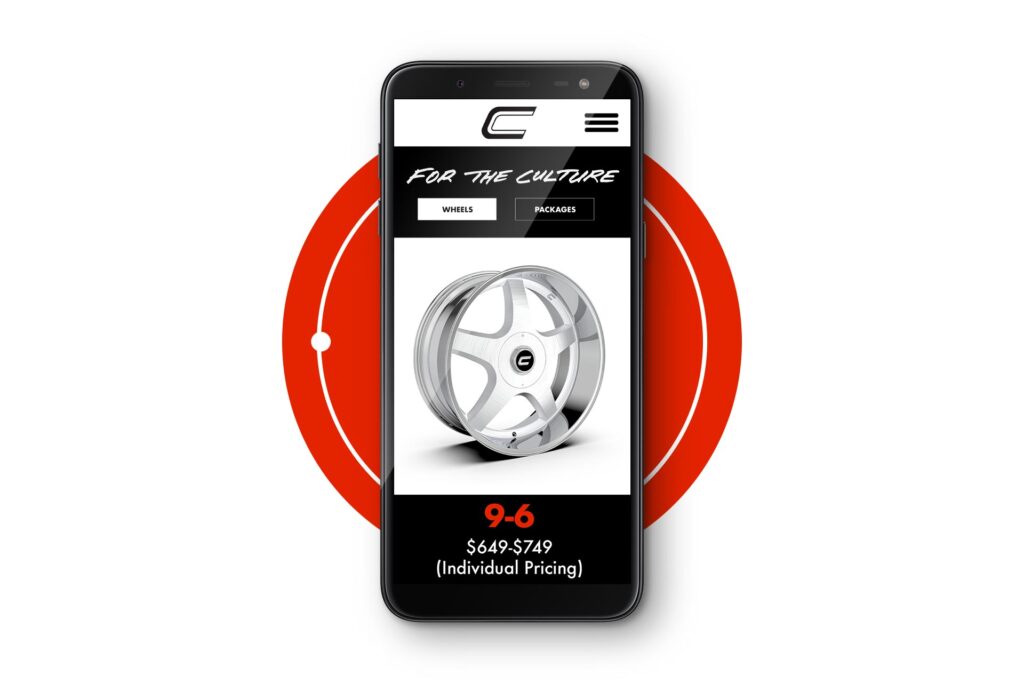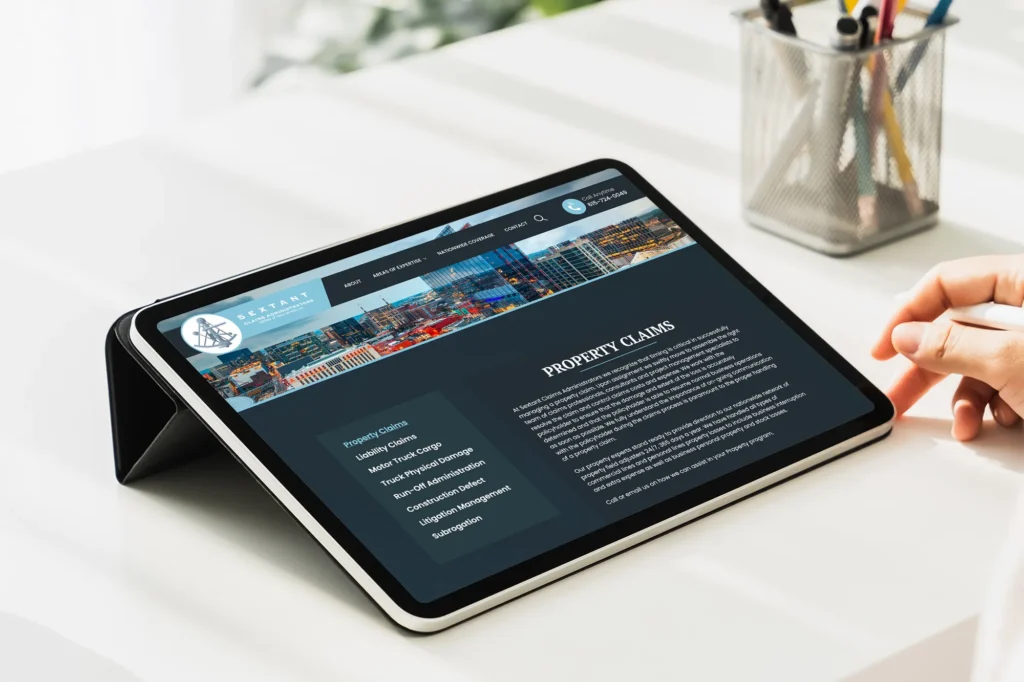
There is a difference between a good website and a great website. And it’s not always easy to spot the difference at first glance. Here are the key elements that make up a high-converting website.
A great website is easy to navigate. Visitors should be able to find what they’re looking for without getting lost. Clear menus, logical page structure, and intuitive design are your best friends here. If they can’t find it, they can’t buy it.
Menus are the backbone of website navigation. They should be clearly labeled and easy to understand. Use descriptive text for menu items so visitors know exactly what to expect when they click on a link. For example, instead of using vague terms like “Products” or “Services,” be specific: “Men’s Clothing,” “Women’s Accessories,” or “Web Design Services.”
A well-organized page structure helps visitors find information quickly. Group related pages together under relevant categories. For instance, if you run an e-commerce site, group products by categories like “Electronics,” “Home Goods,” and “Clothing.” Logical structuring also involves using sub-menus to avoid cluttering the main menu. Ensure that your most important pages are easily accessible from the homepage.
An intuitive design anticipates the needs of your visitors and makes it easy for them to navigate your site. This involves:
Breadcrumbs are a secondary navigation aid that helps users understand their location within the site. They show the path taken to arrive at the current page and provide an easy way to backtrack. Breadcrumbs are particularly useful for websites with a deep hierarchical structure.
Compelling CTAs are crucial. Go for the direct order versions, like “Buy Now,” “Sign Up,” or “Learn More.” your CTAs should be bold, clear, and compelling. Make them stand out and guide your visitors towards an action.

CTAs serve as a guide for your visitors, directing them towards the actions you want them to take. Without clear CTAs, users may leave your site without engaging further, missing opportunities for conversion. CTAs provide a clear path for users to follow, reducing friction and increasing the likelihood of them taking the desired action.
A well-crafted CTA can significantly boost your conversion rates. By clearly stating what you want the user to do next, you make it easier for them to take action. This could be anything from signing up for a newsletter to making a purchase. The clearer and more compelling your CTA, the higher your chances of converting visitors into leads or customers.
Compelling CTAs contribute to a positive user experience by providing clear directions and reducing confusion. When visitors know exactly what steps to take next, they are more likely to have a seamless and satisfying experience on your site. This positive interaction can lead to increased trust and loyalty.
A strong CTA reinforces your value proposition by reminding users of the benefits they’ll receive by taking action. Whether it’s “Save 20% Today” or “Get Your Free E-book Now,” an effective CTA emphasizes the value and urgency, encouraging immediate action.
Content is king, unless it’s not engaging. Your copy should be clear, concise, and compelling. Use headlines that grab attention, body text that informs, and visuals that captivate. Remember, you’re telling a story – make it one they want to follow.
In a world saturated with information, capturing your audience’s attention is the first hurdle. Engaging content stands out in the crowd, grabbing the reader’s interest from the first glance. This is essential in an era where the average human attention span is shorter than ever.
Engaging content invites interaction, whether through comments, shares, likes, or other forms of engagement. This interaction not only boosts your content’s reach and visibility but also fosters a sense of community and connection with your audience.
When your content is engaging, it demonstrates that you understand and care about your audience’s needs and interests. This builds trust and credibility, positioning you as a reliable source of information and a leader in your field.
Ultimately, the goal of most content is to drive some form of conversion, whether it’s making a purchase, signing up for a newsletter, or downloading a resource. Engaging content is persuasive, guiding readers towards taking the desired action.
Your website must look great on any device. Responsive design ensures your site adapts to different screen sizes and devices, providing a seamless experience for all users. Don’t make them pinch and zoom – they’ll get frustrated and leave.

When visitors come to your site, they expect a smooth and intuitive experience, regardless of the device they’re using. Responsive design ensures that your website adjusts its layout, images, and functionalities to fit the screen size, whether it’s a smartphone, tablet, or desktop. This adaptability eliminates the need for users to pinch, zoom, or scroll excessively, reducing frustration and increasing satisfaction.
With the majority of internet users now accessing websites via mobile devices, it’s imperative that your site performs well on smaller screens. According to recent statistics, mobile traffic accounts for over 50% of global web traffic. A responsive design caters to this significant audience segment, ensuring that you don’t miss out on potential customers who prefer browsing on their phones or tablets.
Search engines like Google prioritize websites that offer a great user experience, and responsive design plays a significant role in this. Google’s algorithm favors mobile-friendly sites and considers responsiveness as a ranking factor. By ensuring your site is responsive, you can improve your search engine rankings, making it easier for potential customers to find you online.
A high bounce rate can negatively impact your search engine rankings and overall website performance. When users land on a non-responsive site that’s difficult to navigate on their device, they are likely to leave quickly. Responsive design provides a seamless experience, keeping visitors on your site longer and reducing the likelihood of them bouncing to a competitor’s site.
Technology and device preferences are constantly evolving. Responsive design future-proofs your website by ensuring it can adapt to new devices and screen sizes as they emerge. This flexibility means you won’t need to redesign your site every time a new device hits the market.
Speed is important. A slow website frustrates visitors and sends them running to your competitors. Optimize your images, streamline your code, and make sure your site loads quickly. Every second counts.
Large, unoptimized images are one of the most common culprits of slow loading times. Ensure your images are compressed and resized appropriately for the web. Use formats like JPEG for photographs and PNG for graphics with fewer colors. Tools like TinyPNG and ImageOptim can help reduce image file sizes without compromising quality.
Each element on your page—images, scripts, stylesheets—requires a separate HTTP request. Minimize these requests by simplifying your design, combining files, and using CSS instead of images where possible. Reducing the number of elements on your page can significantly speed up load times.
Browser caching stores certain elements of your site on users’ devices, so they don’t have to be reloaded every time the user visits. This can drastically reduce load times for repeat visitors. Set an appropriate cache expiration time to ensure users always have the most up-to-date content.
Streamline your HTML, CSS, and JavaScript files by removing unnecessary spaces, comments, and code. Minifying your code reduces file sizes and improves load times. Tools like UglifyJS and CSSNano can automate this process for you.
A CDN distributes your website’s static files across a network of global servers. When a user accesses your site, they are served files from the nearest server, reducing load times. CDNs like Cloudflare and Amazon CloudFront can significantly enhance your site’s speed and performance.
The time it takes for your server to respond to a request affects your overall load time. Optimize your server performance by choosing a reliable hosting provider, upgrading your server resources, and using techniques like database optimization and load balancing.
Enabling Gzip compression can reduce the size of your HTML, CSS, and JavaScript files, speeding up load times. Most modern web servers support Gzip compression, and it can be enabled through server configuration files.
Lazy loading defers the loading of non-critical resources (like images below the fold) until they are needed. This reduces initial page load time and saves bandwidth. Implementing lazy loading ensures that only the necessary content is loaded first, enhancing the overall user experience.
Build trust with your visitors by showcasing testimonials, reviews, and trust badges. Highlight your certifications, partnerships, and any media coverage. These elements reassure visitors that you’re a credible and reliable choice. It says something that YOU cannot say for your business.

When visitors land on your website, especially for the first time, they may be skeptical about your legitimacy. Trust signals help alleviate this skepticism by providing social proof and evidence of your credibility. By showcasing testimonials, reviews, and trust badges, you demonstrate that others have had positive experiences with your business, which can persuade new visitors to trust you as well.
Trust signals enhance your credibility by highlighting third-party endorsements and validations. Certifications, partnerships, and media coverage are powerful indicators that your business is recognized and respected within your industry. These elements lend authority to your brand and make visitors more confident in choosing your products or services.
Trust is a critical factor in the decision-making process. When visitors trust your website, they are more likely to take the desired actions, such as making a purchase, signing up for a newsletter, or filling out a contact form. Trust signals can significantly boost your conversion rates by making visitors feel secure and confident in their decision to engage with your business.
If search engines can’t find you, neither can your customers. Make sure your website is optimized for SEO with relevant keywords, meta tags, and high-quality content. This boosts your visibility and drives more organic traffic to your site.
Search engines are often the starting point for online experiences. When potential customers search for products or services related to your business, you want your website to appear at the top of the search results. Effective SEO increases your site’s visibility, making it more likely that users will find and visit your site.
Organic traffic refers to visitors who find your site through unpaid search results. This type of traffic is highly valuable because it comprises users actively searching for information, products, or services that you offer. By optimizing your website for SEO, you attract more organic traffic, which can lead to higher engagement and conversions.
Websites that rank high on search engine results pages (SERPs) are often perceived as more credible and trustworthy. Users trust search engines to deliver relevant and reliable results. By optimizing your site for SEO and appearing at the top of the search results, you enhance your brand’s credibility and trustworthiness.
SEO is a cost-effective marketing strategy compared to paid advertising. While it requires an initial investment of time and resources, the long-term benefits of SEO can far outweigh the costs. Once your site achieves high rankings, it can continue to attract organic traffic without ongoing ad spend.
Knowledge is power. Use analytics to track visitor behavior, measure performance, and identify areas for improvement. Understanding what works (and what doesn’t) helps you fine-tune your website for maximum conversions.
Analytics tools like Google Analytics provide detailed information about your visitors’ behavior. You can see which pages they visit, how long they stay, what actions they take, and where they drop off. This data helps you understand what your audience is interested in and how they navigate your site.
Tracking key performance indicators (KPIs) such as page views, bounce rate, session duration, and conversion rates helps you measure your website’s effectiveness. By analyzing these metrics, you can determine which areas of your site are performing well and which need improvement.
Analytics can highlight areas where your website may be underperforming. High bounce rates might indicate that visitors are not finding what they are looking for, while low conversion rates might suggest issues with your calls-to-action (CTAs) or overall user experience. Identifying these issues allows you to make data-driven changes to enhance your site’s performance.
By understanding how different segments of your audience interact with your site, you can tailor the user experience to meet their specific needs. Personalization can lead to higher engagement and conversion rates, as visitors feel more connected to your content and offerings.
A high-converting website isn’t built overnight. It’s a carefully crafted blend of design, content, and strategy, all working together to create an exceptional user experience. Follow this blueprint, and you’ll be well on your way to online success.
Ready to build a website that converts like crazy? Get in touch with us today, and let’s make it happen!
Copyright © 2025 Christopher Gunn Creative. All Rights Reserved.